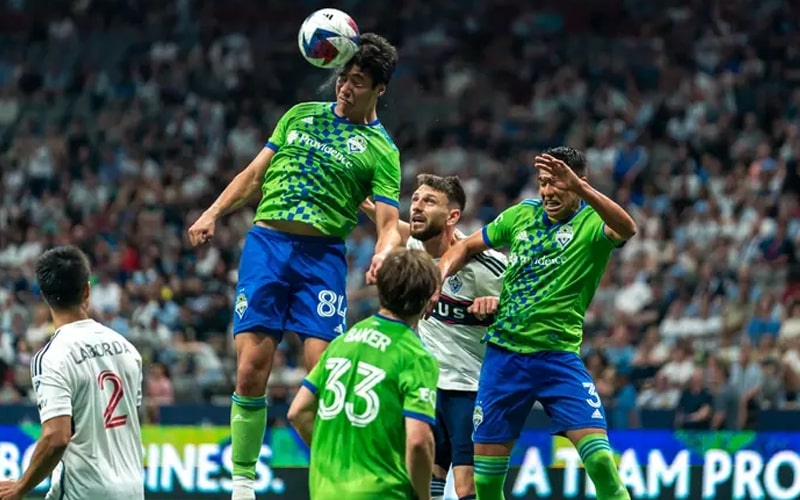While still lagging behind the major North American sports leagues in revenue, Major League Soccer club values and incomes have grown substantially as the league has expanded its footprint and boosted its profile. But how exactly do MLS franchises make money and increase their net worth? This article takes a deep dive into MLS club finances.
Growing MLS Club Valuations
The value of an MLS club is based on its overall revenue potential, global profile, assets like stadiums, and future growth prospects. Franchise values have risen rapidly:
- The average MLS club is now worth $550 million, up over 175% from $200 million just 5 years ago.
- Atlanta United tops the list at $1.3 billion based on massive fan support and stadium revenue. LAFC is second at $860 million.
- Seven MLS clubs made the top 50 most valuable soccer teams worldwide, a sign of increasing financial muscle.
- New expansion fees are topping $300 million as the league’s growth trajectory attracts investors.
As media rights improve and new stadiums are constructed, MLS club valuations should continue rising though financial disparities persist between clubs.
Matchday Revenue
For most soccer clubs worldwide, ticket sales and gameday spending make up a huge portion of revenue. While MLS has greater parity across income streams, matchday still accounted for around 25% of the average club’s revenue in 2021. Here’s a breakdown of those key matchday income sources:
Ticket Sales
- Ticket sales from home matches provide MLS clubs with essential recurring income. Average attendance now tops 20,000 leaguewide.
- Dynamic pricing models that adjust ticket costs based on factors like opponent and day of the week help maximize revenue.
- Premium seating options like suites, club seats, and premium clubs command higher prices from wealthier fans.
Stadium Concessions
- Food, beverage, merchandise, and parking sales earn additional matchday income. Concessions accounted for around 17% of MLS revenue on average in 2018.
- New stadiums boost concession spending and allow clubs to retain more of this revenue.
Event Hosting
- MLS stadiums can host concerts, college sports, and other events on non-game days to provide supplemental income through rent, concessions and parking.
Leveraging stadiums as multipurpose event venues provides valuable additional matchday revenue beyond just MLS matches.
Media Rights Deals
Selling rights to broadcast games has become MLS’s largest revenue stream, overtaking matchday income as the league’s media profile expands.
- MLS earns around $90 million per year from its current deals with ESPN, Fox Sports, and Univision.
- A new Apple TV deal launching in 2023 will pay MLS a minimum of $250 million annually for 10 years – a gamechanger.
- Local TV and radio rights deals add to the sizeable national broadcasting income.
- Digital streaming opens new revenue possibilities though blackout restrictions persist.
As rights fees increase and MLS receives a bigger cut, media will propel club revenues higher and likely overtake matchday income.
Sponsorship and Branding
Sponsorship deals are another major income stream as brands pay for exposure through MLS club promotions and stadium advertising.
- Jersey sponsorships are hugely valuable – LAFC landed the highest MLS deal ever with $100m over 15 years from YouTubeTV.
- Pitch-level field board ads during TV broadcasts command premium rates from sponsors.
- Naming rights to stadiums themselves provide major upfront income. LAFC’s Banc of California deal was worth $100m+ over 15 years.
- MLS sponsorship revenue has tripled over the past decade as the league’s profile has grown. Secondary kit and training kit deals add up too.
With strong corporate interest, branding and sponsorship deals should continue driving MLS club revenue higher.
Commercial Operations
Beyond matches themselves, MLS franchises engage in commercial activities that leverage their brand and assets to create additional income streams:
- Operating club stores both online and physical retail locations sells merchandise directly to fans.
- Running youth development academies and camps not only develops talent but brings in revenue.
- Hosting viewing parties and special events provides fan engagement along with food, beverage, and retail sales.
- Renting club facilities for corporate events and partner activities creates supplemental profits.
- Travel and tours allow fans to engage with clubs abroad while leveraging team brands into new markets.
Tapping the loyalty of fans through commercial channels supplementary to matches broadens revenue opportunities.
Player Transfers
Selling talented players to foreign clubs remains a limited revenue stream in MLS relative to other leagues, but it is growing:
- Just 1-2% of MLS club revenue came from transfers in 2018 but more big sales should increase proportions.
- Miguel Almiron’s $27 million sale to Newcastle in 2019 quadrupled the previous MLS transfer record.
- Young South American stars are signed strategically with the aim of eventual sale at a profit.
- Homegrown player development helps clubs either sell academy products abroad or retain those rising stars.
While still not huge, transfer fees represent an increasing – and flexible – revenue component as MLS player values rise.
Owners & Investors
Wealthy owners and investors have been critical in funding MLS clubs – historically operating at a loss – as they aim to grow in value long term:
- Billionaire owners like Arthur Blank (Atlanta) and oil heir Robert Kraft (New England) help offset club costs as MLS grows.
- New investors are paying $300 million+ for expansion franchises as MLS club values rise.
- However, increasing pressures for financial sustainability mean fewer owners are willing to tolerate losses indefinitely. Profitability is a growing focus.
MLS will aim to depend less on benefactors as media deals and assets like stadiums make clubs self-sufficient – but owners remain key investors.
Path to Profitability
After heavy upfront infrastructure investment, MLS franchises are now focused on controlling costs and leveraging assets to reach profitability:
- More clubs own soccer-specific stadiums they can better monetize with adjacent development.
- New stadiums and training grounds boost player development, performance, and appeal.
- Regionalized travel via conferences reduces inefficient coast-to-coast trips.
- McDonald’s $39 million training facility investment in Atlanta shows commercial revenue potential.
The league is still loss-making overall due to expansion costs but the path to self-sufficient clubs generating profit is becoming clearer.
Revenue Sharing
A unique aspect of MLS finances is that certain revenues are shared evenly between clubs to promote parity. This includes national media rights deals and sponsorship income:
- Media rights account for around 30% of MLS’s $1 billion in annual revenue. This is distributed evenly to clubs.
- Jersey sponsorships involve both local club deals and a league-wide partnership, currently with Adidas. The latter sees revenue shared.
- 25% of expansion fees paid by new teams are shared with existing clubs.
- Some clubs actually receive more revenue sharing funds than what they contribute locally.
This socialist approach aims to negate big financial disparities between large and small market clubs seen in other leagues. It may evolve as market forces take hold.
Stadium Developments
Owning soccer-specific stadiums has become crucial for MLS clubs to control revenues while boosting matchday atmospheres:
- 22 of 28 MLS clubs will have soccer-specific stadiums after ongoing projects complete, with more planned.
- Fleet-footed capacities of 25,000+ optimize atmosphere while meeting fan demand.
- Ideal downtown locations near public transit help build supporter culture.
- Development of adjacent real estate helps clubs diversify revenue streams through retail, housing and entertainment districts.
Stadiums remain the physical manifestation of MLS clubs in their communities and key long-term assets. Ongoing investment aims to make them experiential highlights.
Conclusion
A diversified array of revenue streams mean MLS clubs are less dependent on matchday income than in the past. Selling media rights, sponsorships, and player transfers will likely propel finances forward. But continued growth and profitability hinges on making clubs globally relevant brands with support that justifies ongoing investment.
Generating sustained fan excitement by delivering a quality product on the pitch is still the fundamental factor underpinning financial success off it in MLS. The health of club finances starts with the health of the league itself. But the business models and assets are falling into place to profitably tap the potential of soccer in North America like never before.




